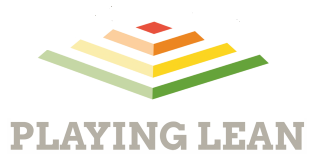In Playing Lean, teams can add new features to their products. That is not so surprising, perhaps. Players are more surprised to see that they also have the option to remove features. In fact, the most frequent question from players is this one:
Why would I ever want to remove a feature that I have already built?
That’s such a good and important question! It’s the que to a training moment, one of those golden opportunities to facilitate insight and understanding.
I’ll tell players that owning a feature is not free. If a feature does not add enough value to customers, you should remove it, even if there’s a cost to do so.
There are several factors that make features costly to own:
- There will be maintenance. As an example, your software will rely on other software that keeps getting updated by others. To keep your system working, you will need to upgrade.
- There will be users who need support. Perhaps your user experience is perfect and self-explanatory, but it usually isn’t.
- There will be bugs and users will find them. You’re going to want to fix them.
This list is quite self-evident. But there’s another factor which is more of a silent killer: The complexity added to your product by your (unnecessary) feature will slow down development speed. That means your next feature will be slower to build. Keep adding and preserving even more features, and the problem compounds.
It’s all about being lean. You should have nothing more than the exact features that serve your user’s needs. The next time you get a valuable and validated insight, you’ll have the speed you need to go after the new opportunity.
In Playing Lean, the cost of developing a new feature increases with the number of features your team has. That drives a lot of the behaviour needed to win. You need to find the easy customers in the beginning, not the ones that are demanding and will bloat your product from the start. You need to search for customer groups that have similar requirements, because a product that seeks to please everyone will lose out. Finally, you need to change fast and remove features when you realize you’re on the wrong path.
Just like in real life.
It’s very common for companies to add a few tweaks and features to make a sale or accommodate to a new set of customers. Then the next customers come along and demand more tweaks and features. In the short term, it might make sense. You want to sell your product. If a little more complexity closes the deal, it might be a good trade-off.
Over time, however, you build a debt of special features and tweaks. You have to pay interest on that debt with every new feature you build. If you keep adding to your debt, the problem will quickly become unmanageable. Development teams will be consumed by putting out all the fires, doing maintenance just to keep everything running and fixing bugs instead of creating value for customers.
While it may not make intuitive sense, paying down on your feature debt improves your speed in the long run.
Join us on 15th June 2021 and play Playing Lean with us from the comfort of your home or office!
Check out Playing Lean FAQ to watch the Playing Lean 2 gameplay video and read answers to the most asked questions about the game.
